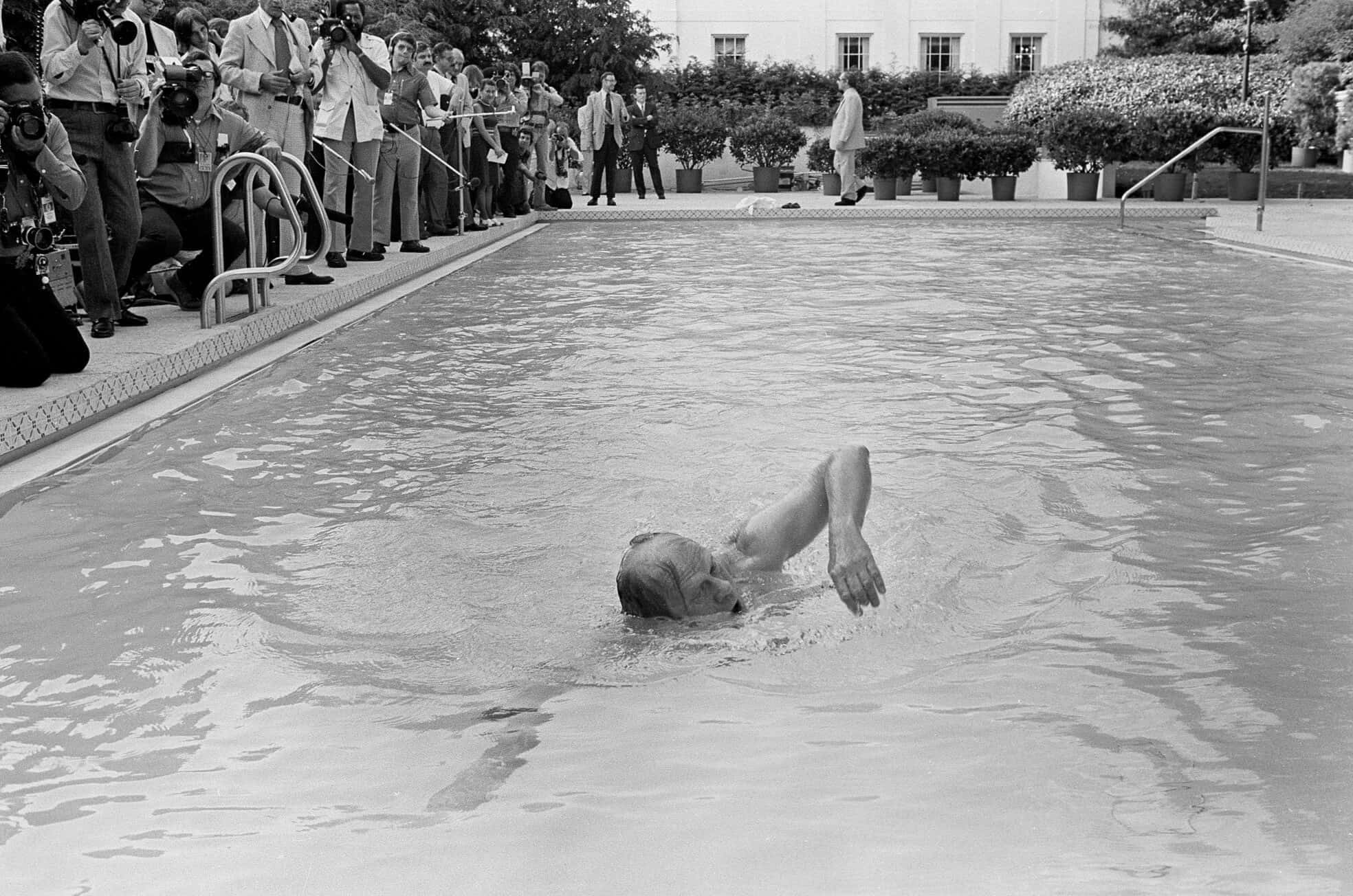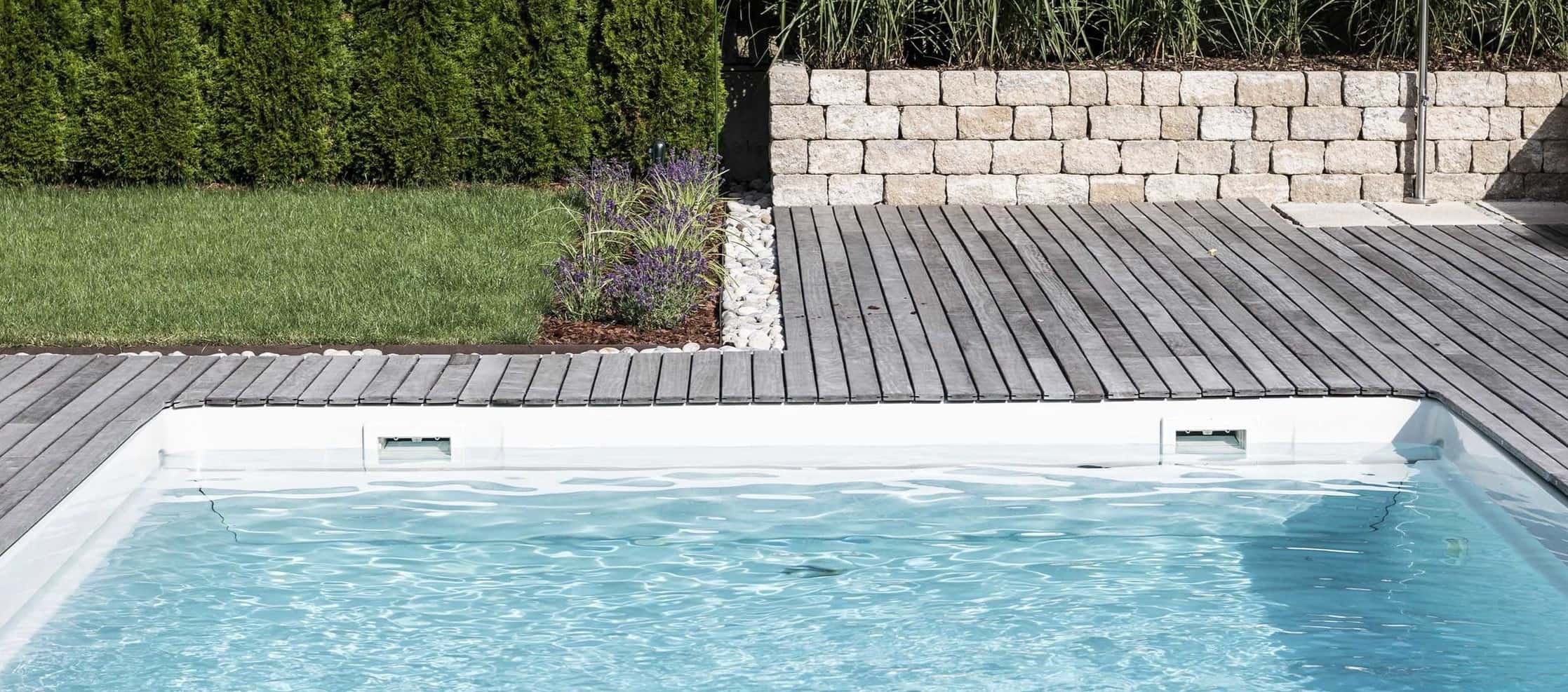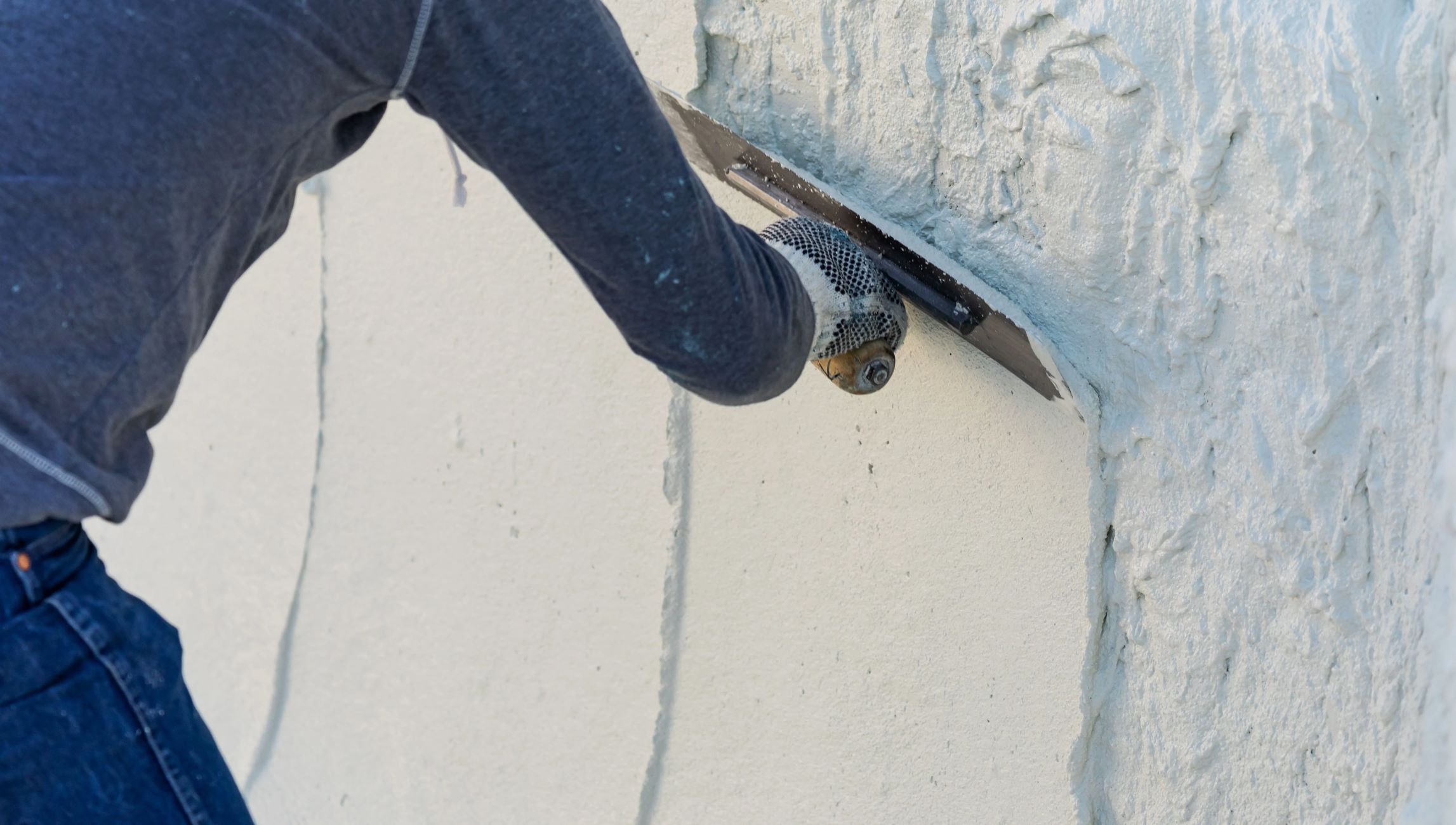Home>Gardening & Outdoor>Outdoor Recreation & Activities>How To Open A Swimming Pool


Outdoor Recreation & Activities
How To Open A Swimming Pool
Published: February 18, 2024
Learn how to open a swimming pool for the season with our comprehensive guide. Get expert tips and advice for outdoor recreation and activities.
(Many of the links in this article redirect to a specific reviewed product. Your purchase of these products through affiliate links helps to generate commission for Storables.com, at no extra cost. Learn more)
Introduction
Opening a swimming pool marks the exciting beginning of the swimming season. As the weather warms up, the anticipation of taking a refreshing dip in the crystal-clear water becomes irresistible. However, the process of opening a swimming pool involves several essential steps to ensure that the water is clean, safe, and inviting for swimmers. From removing the pool cover to balancing the water chemistry, each step plays a crucial role in preparing the pool for a season of enjoyment.
Properly opening a swimming pool is not only about uncovering the water and diving in. It involves a series of tasks that contribute to the overall health and maintenance of the pool. By following a systematic approach, pool owners can ensure that their pool is in optimal condition, free from debris, and chemically balanced for safe swimming.
In this comprehensive guide, we will walk you through the step-by-step process of opening a swimming pool. From removing the cover to testing and balancing the water chemistry, each stage is vital in ensuring that your pool is ready for enjoyment. By following these steps, you can take the necessary measures to maintain a clean, clear, and inviting swimming environment for yourself, your family, and your friends.
So, let's dive into the details of each step, providing you with the knowledge and confidence to open your swimming pool successfully. Whether you are a seasoned pool owner or new to the world of pool maintenance, this guide will equip you with the essential information to kick off the swimming season with a sparkling and inviting pool.
Key Takeaways:
- Get ready for a season of fun by following these steps to open your swimming pool. From removing the cover to balancing the water, you’ll ensure a clean and inviting pool for everyone to enjoy!
- By carefully cleaning, testing, and maintaining your pool, you’ll create a safe and refreshing swimming environment. Enjoy the rewards of your hard work with a sparkling and inviting pool all season long!
Read more: How To Open A Saltwater Swimming Pool
Step 1: Remove the Pool Cover
The first step in opening a swimming pool is to carefully remove the pool cover. This process requires patience and attention to detail to ensure that the cover is removed without causing any damage and that the pool water remains free from debris.
Before removing the cover, it's essential to clear the surrounding area of any leaves, twigs, or other debris that may have accumulated on top of the cover. This prevents the debris from falling into the pool when the cover is removed. Using a leaf blower or a soft broom can help in clearing the cover and the area around it.
Next, gently remove the cover, taking care to avoid dragging it across the pool's surface. If the cover is heavy or cumbersome, it's advisable to have assistance to prevent any accidental dropping or tearing. As the cover is lifted, it's important to keep it as level as possible to prevent any debris from sliding into the pool.
Once the cover is completely removed, it should be thoroughly cleaned and dried before being stored in a cool, dry place. This helps to prevent mold, mildew, or any unpleasant odors from developing on the cover, ensuring that it remains in good condition for future use.
Inspecting the cover for any tears, holes, or damage is also crucial. Any issues should be addressed promptly to prevent them from worsening and to ensure that the cover provides effective protection when the pool is not in use.
By carefully and methodically removing the pool cover, pool owners can effectively prepare the pool for the next stages of the opening process. This initial step sets the stage for a successful and enjoyable swimming season, ensuring that the pool is free from debris and ready for further maintenance and preparation.
Taking the time to remove the pool cover with care and attention to detail sets a positive tone for the rest of the pool opening process, laying the foundation for a clean, inviting, and well-maintained swimming pool.
Step 2: Clean the Pool Deck and Surrounding Area
After the pool cover has been carefully removed, the next crucial step in opening a swimming pool is to focus on cleaning the pool deck and the surrounding area. This step is essential for creating a welcoming and safe environment for swimmers and ensuring that the pool area is free from debris, dirt, and potential hazards.
The pool deck, often made of concrete, stone, or other materials, is prone to accumulating dirt, leaves, and other debris during the off-season. Additionally, the surrounding area, including walkways, furniture, and landscaping, may also require attention to restore the overall appeal of the pool area.
To begin the cleaning process, start by removing any leaves, twigs, or other debris from the pool deck and surrounding areas. Using a leaf blower, a soft broom, or a gentle spray from a garden hose, clear away the accumulated debris. Pay close attention to corners, crevices, and areas around furniture or equipment, as these spots are often overlooked but can harbor significant amounts of debris.
Once the loose debris has been cleared, it's time to address any stubborn stains, dirt, or grime that may have accumulated on the pool deck. Depending on the material of the deck, a suitable cleaning method should be employed. For concrete decks, a pressure washer can be effective in removing built-up dirt and stains. For stone or tile decks, a gentle scrub with a mild detergent and water may be more appropriate to avoid damage to the surface.
In addition to cleaning the pool deck, it's important to inspect and clean any poolside furniture, umbrellas, and accessories. Wiping down furniture, removing cobwebs, and ensuring that all poolside amenities are clean and in good condition adds to the overall appeal and comfort of the pool area.
Furthermore, inspecting and cleaning the poolside landscaping, such as potted plants or decorative elements, can contribute to the aesthetic appeal of the pool area. Trimming overgrown plants, removing dead foliage, and refreshing the landscaping can enhance the visual appeal and create a more inviting atmosphere for swimmers and guests.
By dedicating time and attention to cleaning the pool deck and the surrounding area, pool owners can create a welcoming and safe environment for swimmers. This step not only contributes to the overall cleanliness and appeal of the pool area but also sets the stage for a season of enjoyable and relaxing poolside experiences.
With the pool deck and surrounding area thoroughly cleaned and revitalized, the next steps in the pool opening process can be approached with confidence, knowing that the pool area is primed for further maintenance and preparation.
Step 3: Check and Reconnect Pool Equipment
As the process of opening a swimming pool progresses, it is essential to shift the focus to the pool equipment. Checking and reconnecting the pool equipment is a critical step in ensuring that the pool operates efficiently and safely throughout the swimming season. This step involves inspecting and re-establishing the functionality of various components, including the filtration system, pumps, heaters, and any additional accessories that contribute to the pool's operation and maintenance.
The first task in this step is to inspect the pool's filtration system. This includes examining the filter, ensuring that it is clean and free from any debris or blockages that may have accumulated during the off-season. Additionally, checking the condition of the filter media and replacing it if necessary is crucial for maintaining optimal filtration efficiency. Inspecting the filter pressure gauge and backwashing the filter, if required, are also essential to ensure that the filtration system is in good working condition.
Next, attention should be directed towards the pool pumps. Inspecting the pump for any signs of damage, wear, or leaks is vital to prevent potential issues during operation. Additionally, ensuring that the pump's strainer basket is clean and properly installed contributes to the overall efficiency of the circulation system. Reconnecting the pump and priming it as necessary prepares the pump for seamless operation, facilitating proper water circulation and filtration.
In addition to the filtration system and pumps, other pool equipment such as heaters, chlorinators, and automatic pool cleaners should be inspected and reconnected as part of this step. Checking the condition and functionality of the pool heater, if applicable, ensures that it is ready to provide comfortable water temperatures as needed. Reconnecting and testing the chlorinator or sanitizer system contributes to maintaining the water's cleanliness and safety. Similarly, ensuring that automatic pool cleaners are properly connected and in good working order prepares the pool for ongoing maintenance and upkeep.
Furthermore, inspecting and reconnecting any additional accessories, such as pool lights, skimmers, and water features, is essential to ensure that the pool is fully operational and ready for use. Verifying the functionality of these components and addressing any issues promptly contributes to creating a safe and enjoyable swimming environment.
By meticulously checking and reconnecting the pool equipment, pool owners can ensure that the pool operates efficiently and safely. This step sets the stage for the subsequent tasks in the pool opening process, laying the groundwork for a season of enjoyable and trouble-free swimming experiences.
With the pool equipment thoroughly inspected and reconnected, the focus can now shift to the next steps in the pool opening process, knowing that the pool is equipped and ready for further maintenance and preparation.
Step 4: Fill the Pool with Water
Filling the pool with water is a pivotal step in the process of opening a swimming pool. It marks the transition from preparing the pool's infrastructure to the tangible realization of a sparkling and inviting swimming environment. While seemingly straightforward, this step requires attention to detail and a systematic approach to ensure that the pool is filled efficiently and to the appropriate level.
The first consideration when filling the pool with water is the source of the water. Whether using a garden hose, a dedicated pool-filling service, or another water delivery method, it is essential to ensure that the water source is clean and free from contaminants. Using water from a reliable and safe source sets the foundation for maintaining the pool's water quality throughout the swimming season.
As the pool begins to fill, it is crucial to monitor the water level carefully. Achieving the optimal water level is essential for the pool's functionality and aesthetics. The water level should typically reach the midpoint of the pool skimmer or the waterline tile for proper circulation and filtration. Maintaining the correct water level also ensures that the pool's equipment, such as the skimmer and pump, operates effectively.
During the filling process, it is advisable to periodically inspect the pool for any signs of leaks, cracks, or irregularities. Observing the pool as it fills allows for the early detection of any potential issues, enabling prompt intervention to address and resolve them. Additionally, ensuring that the pool's water level aligns with the recommended height contributes to the overall safety and functionality of the pool.
Once the pool reaches the desired water level, the filling process is complete. At this stage, it is essential to inspect the pool's water for any visible impurities or discoloration. While the filtration system will address many water quality issues, identifying any immediate concerns allows for proactive measures to be taken to maintain the water's clarity and cleanliness.
Filling the pool with water signifies a significant milestone in the pool opening process, bringing the vision of a pristine and inviting swimming environment to fruition. By approaching this step with attentiveness and precision, pool owners can ensure that their pool is filled to the appropriate level, setting the stage for the subsequent tasks in the pool opening process.
With the pool now filled with clean, clear water, the focus can shift to the next critical steps in the pool opening process, knowing that the foundation for a season of enjoyable and refreshing swimming experiences has been successfully established.
Before opening your swimming pool, make sure to clean and remove any debris from the pool and surrounding area. This will help ensure that your pool water stays clean and clear throughout the season.
Read more: How To Remove A Swimming Pool
Step 5: Test and Balance the Water Chemistry
Testing and balancing the water chemistry is a fundamental aspect of opening a swimming pool, as it directly impacts the safety, comfort, and overall enjoyment of swimmers. Properly balanced water chemistry not only ensures a pleasant swimming experience but also contributes to the longevity of the pool's equipment and surfaces. This step involves conducting comprehensive water tests, analyzing the results, and making necessary adjustments to achieve optimal water balance.
The first task in this step is to perform a thorough water test to assess key chemical parameters such as pH, total alkalinity, calcium hardness, and free chlorine levels. Testing kits specifically designed for pool water analysis are readily available and provide accurate measurements for these essential parameters. By following the instructions provided with the testing kit, pool owners can obtain precise readings that serve as the basis for balancing the water chemistry.
Upon obtaining the test results, the next phase involves interpreting the data and determining the appropriate course of action to achieve balanced water chemistry. The pH level, which indicates the acidity or basicity of the water, should ideally fall within the recommended range of 7.2 to 7.8. Total alkalinity, which acts as a buffer for pH changes, should typically be maintained within the range of 80 to 120 parts per million (ppm). Furthermore, the calcium hardness level, representing the concentration of dissolved calcium in the water, should be balanced within the range of 200 to 400 ppm. Additionally, ensuring that the free chlorine level is within the recommended range of 1 to 3 ppm is crucial for effective sanitization and algae prevention.
Based on the test results, adjustments may be necessary to balance the water chemistry. For instance, if the pH level is outside the recommended range, pH increaser or decreaser can be added to bring it within the optimal range. Similarly, alkalinity increaser or decreaser may be used to adjust total alkalinity, while calcium chloride can be added to raise calcium hardness if needed. Additionally, the free chlorine level can be adjusted using chlorine or other suitable sanitizers to ensure effective disinfection.
By meticulously testing and balancing the water chemistry, pool owners can create a safe, comfortable, and inviting swimming environment. Properly balanced water chemistry not only promotes water clarity and sanitation but also contributes to the prevention of equipment corrosion and surface damage. This step sets the stage for a season of enjoyable and worry-free swimming experiences, knowing that the pool's water chemistry is meticulously maintained and optimized for swimmers' well-being.
With the water chemistry thoroughly tested and balanced, the focus can now shift to the subsequent steps in the pool opening process, confident in the knowledge that the pool's water is in optimal condition for a season of refreshing and rejuvenating swimming experiences.
Step 6: Start the Filtration System
Starting the filtration system is a pivotal step in the process of opening a swimming pool, as it sets the foundation for maintaining clean, clear, and healthy water throughout the swimming season. The filtration system plays a crucial role in removing impurities, debris, and contaminants from the pool water, contributing to its overall clarity and sanitation. By initiating and optimizing the filtration system, pool owners can ensure that the water remains inviting and safe for swimmers, while also preserving the integrity of the pool's surfaces and equipment.
The first task in this step is to inspect the filtration system to ensure that all components are in good working condition. This includes examining the filter, checking for any signs of damage or wear, and verifying that the filter media is clean and properly installed. Additionally, inspecting the filter pressure gauge and ensuring that it is within the recommended range sets the stage for efficient filtration operation.
Once the filtration system has been inspected, the next phase involves starting the system and allowing it to run for an initial period. This initial run serves to prime the system, allowing water to flow through the filter and ensuring that the circulation process is initiated. Observing the filtration system during this period allows for the detection of any potential issues, such as leaks, unusual noises, or irregularities in water flow, enabling prompt intervention if necessary.
Following the initial run, it is essential to monitor the filtration system's operation and performance regularly. This includes observing the water flow, checking for any signs of debris or blockages in the skimmer and pump strainer basket, and ensuring that the circulation process is consistent and effective. Additionally, verifying that the filtration system operates for the recommended duration each day contributes to maintaining optimal water clarity and sanitation.
Furthermore, optimizing the filtration system's schedule to align with the pool's usage patterns and environmental factors is crucial for efficient operation. Adjusting the filtration system's runtime based on factors such as swimmer load, weather conditions, and water temperature ensures that the water remains clean and inviting while conserving energy and resources.
By meticulously starting and optimizing the filtration system, pool owners can establish a foundation for maintaining clean, clear, and healthy water throughout the swimming season. This step not only contributes to the overall appeal and safety of the pool but also supports the longevity and efficiency of the pool's equipment and surfaces.
With the filtration system successfully initiated and optimized, the focus can now shift to the subsequent steps in the pool opening process, knowing that the pool's water circulation and filtration are meticulously maintained for a season of enjoyable and refreshing swimming experiences.
Step 7: Shock the Pool
Shocking the pool is a critical step in the process of opening a swimming pool, serving as a proactive measure to eliminate organic contaminants, restore water clarity, and maintain optimal sanitation. This process, also known as super chlorination, involves adding a concentrated dose of chlorine to the pool water to effectively eradicate bacteria, algae, and other impurities that may have accumulated during the off-season or as a result of heavy pool usage. By shocking the pool, pool owners can ensure that the water is safe, clean, and inviting for swimmers, setting the stage for a season of enjoyable and worry-free swimming experiences.
The first consideration when shocking the pool is selecting the appropriate shock treatment product. Various types of pool shock, such as calcium hypochlorite, sodium dichlor, or non-chlorine shock, are available, each with specific characteristics and application methods. It is essential to choose a shock treatment that aligns with the pool's specific needs and water chemistry requirements, ensuring effective and targeted treatment.
Before applying the shock treatment, it is advisable to perform a thorough water test to assess the current chlorine levels and determine the extent of the treatment required. This allows for precise dosage calculations and ensures that the shock treatment achieves the desired results without over-chlorinating the water. Following the manufacturer's guidelines for the selected shock treatment product is crucial to achieve optimal results and prevent potential adverse effects on the pool's water chemistry.
Once the appropriate shock treatment product has been selected and the dosage calculated, the shock treatment can be applied to the pool water. This process typically involves evenly distributing the shock treatment granules or liquid across the pool's surface, ensuring thorough mixing and dispersion. It is essential to follow safety precautions, such as wearing protective gear and avoiding direct contact with the shock treatment product, to safeguard against potential skin or eye irritation.
After applying the shock treatment, allowing the pool's circulation system to run for an extended period facilitates the thorough mixing and distribution of the shock treatment throughout the water. This ensures that the shock treatment reaches all areas of the pool, effectively addressing any organic contaminants and restoring water clarity. Additionally, monitoring the water's chlorine levels following the shock treatment allows for the assessment of its impact and the verification of successful super chlorination.
By meticulously shocking the pool, pool owners can proactively address organic contaminants and maintain optimal water sanitation, creating a safe, clean, and inviting swimming environment. This step not only contributes to the overall water quality and clarity but also supports the effectiveness of ongoing pool maintenance and upkeep, ensuring a season of enjoyable and refreshing swimming experiences.
With the pool successfully shocked and the water quality optimized, the focus can now shift to the subsequent steps in the pool opening process, knowing that the pool's water is meticulously maintained and prepared for a season of worry-free and rejuvenating swimming experiences.
Step 8: Enjoy Your Clean and Refreshing Swimming Pool
With the meticulous completion of the preceding steps in the pool opening process, the stage is set for the ultimate reward – the enjoyment of a clean, inviting, and refreshing swimming pool. As the final step, this phase marks the culmination of diligent preparation and maintenance, offering the opportunity to relish the fruits of labor and indulge in the pleasures of a well-maintained aquatic oasis.
Upon reaching this stage, pool owners and enthusiasts are greeted with the sight of pristine, crystal-clear water, reflecting the surrounding landscape and beckoning swimmers to immerse themselves in its revitalizing embrace. The pool deck, meticulously cleaned and revitalized, provides a welcoming space for relaxation, socializing, and basking in the sun's warm embrace. The surrounding area, free from debris and meticulously maintained, sets the stage for a seamless transition from the demands of daily life to the tranquility and enjoyment of a private aquatic retreat.
As swimmers dip into the cool, refreshing water, the meticulous testing and balancing of the water chemistry ensure a safe and comfortable swimming experience. The optimized filtration system, diligently started and fine-tuned, maintains the water's clarity and purity, allowing swimmers to revel in the invigorating sensation of a well-maintained pool. The shock treatment, effectively eliminating organic contaminants and restoring water sanitation, provides the assurance of a clean and hygienic swimming environment, free from impurities and conducive to relaxation and rejuvenation.
The enjoyment of a clean and refreshing swimming pool extends beyond the immediate sensory pleasures. It encompasses the peace of mind that comes with knowing that the pool is meticulously prepared, maintained, and optimized for a season of worry-free and rejuvenating swimming experiences. It embodies the satisfaction of upholding a space that fosters well-being, relaxation, and cherished moments with family and friends, creating lasting memories and fostering a sense of community and togetherness.
As the sun glistens on the water's surface and the gentle ripples reflect the surrounding tranquility, the clean and refreshing swimming pool becomes a sanctuary of relaxation, joy, and rejuvenation. It stands as a testament to the dedication and care invested in its maintenance, offering a haven of aquatic bliss and the promise of countless enjoyable moments in the days and months ahead.
In essence, the culmination of the pool opening process heralds the beginning of a season of enjoyment, relaxation, and cherished experiences. It signifies the transformation of a meticulously prepared and maintained pool into a source of rejuvenation, recreation, and cherished memories, inviting swimmers to embrace the pleasures of a clean and refreshing swimming pool.
Frequently Asked Questions about How To Open A Swimming Pool
Was this page helpful?
At Storables.com, we guarantee accurate and reliable information. Our content, validated by Expert Board Contributors, is crafted following stringent Editorial Policies. We're committed to providing you with well-researched, expert-backed insights for all your informational needs.















0 thoughts on “How To Open A Swimming Pool”